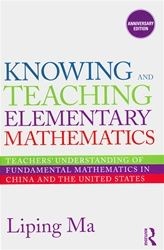I will not take this for an answer. Maths is not mundane. It is not tedious. Most of all, it is not boring! I have learned this only from teaching maths in my professional practice and still then I was not 100% confident maths could be full of fun and adventure. However, now, having completed the Discovering Mathematics module, my fun with maths is only just beginning.
Maths does not have to be a chore. It does not have to be the dreaded subject for a learner to approach. But this is up to you, the teach, the educator, the facilitator, the mathematician! I think it is important that in order for a learner to enjoy learning mathematics, the content delivery should be engaging, intriguing and taught with an approach oozing motivation and love for learning maths. Otherwise, what’s the point? You’ll be bored teaching it and you’ll be fed up learning it. Make it fun, it’s down to you to get involved.
Piaget (1953) expresses his view of learning maths:
“It is a great mistake that a child acquires the notion of number and other mathematical concepts just from teaching. On the contrary, to a remarkable degree he develops them himself independently and spontaneously. When adults try to impose mathematics concepts on a child prematurely, his learning is merely verbal; true understanding of them comes only with his mental growth.”
(p. 74)
My interpretation of this, is Piaget is saying maths does not solely have to be learned from the teacher teaching the subject content; honest understanding and real learning of maths happens through experience out-with the classroom, as well as in the class environment. I can vouch for this and state that I completely agree with this statement. I have learned through the course of Discovering Mathematics that maths can in fact be discovered and learned successfully by independent research and development. By development, I mean I have developed an appreciation for maths more than I had prior to this module. The way I have learned maths and been taught maths has made it intriguing maths rather than mundane, which is immensely important to note.
Bruner (1964) makes a valid point:
“Any idea or body of knowledge can be presented in a form simple enough so that any particular learner can understand it”.
(p. 44)
To me, this summarises and clarifies what fundamental mathematics is all about – why we talk about it, why we learn about it and why we use it to teach. It is so important to know about.
Prior to this module, I did not have a clue what ‘fundamental mathematics’ was. I mean, I could take somewhat-aimless guesses at what it meant, but I did not know how to approach understanding what it entailed and meant in the classroom context. Bruner (1964) suggests any content of learning has the ability to be translated in its notion, in order to allow learners to understand it at the appropriate level. In other words, abstract and ‘scary’ maths – which is commonly the root of maths anxiety (pardon the pun) – can be taught, delivered or learned in a different form, one that is more simple or fundamental, for the learner to have an easier understanding.
References
Bruner, J. S. (1964) Some theorems on instruction illustrated with reference to mathematics. In E.R. Hilgard (Eds.), Theories of Learning and Instruction: The sixty-third yearbook of the National Society for the Study of Education (NSSE) Chicago: The University of Chicago Press.
Mason, J., Burton, L. and Stacey, K. (2010) Thinking Mathematically (2nd ed.). Harlow: Pearson Education Ltd.
Piaget, J. (1953, reprinted 1997) The origins of intelligence in the child. Abingdon: Routledge.









